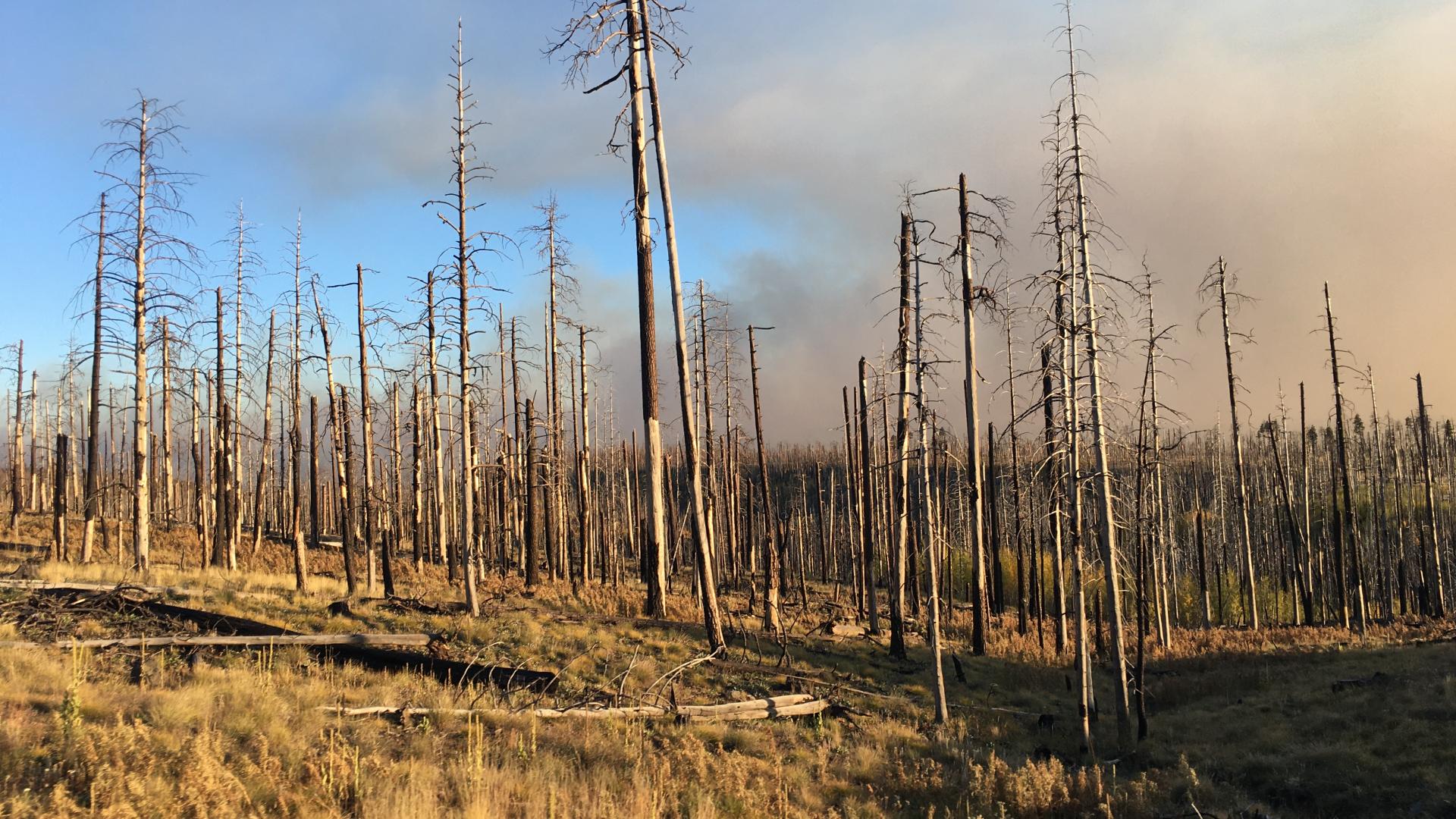
- Written by Austin Rutherford, University of ArizonaBody
Grassland structure is maintained through multiple natural disturbance regimes. Natural disturbances can include grass utilization and trampling by herbivores and droughts that limit productivity and plant-plant competition for water. Fire, however, is potentially the most essential in promoting grass dominance while also reducing cover of encroaching shrubs/trees including the seedlings and saplings obscured in dense grass cover. Fire in native grasslands can aid in removing excess litter allowing grasses to recruit and establish, promote soil nutrient cycling, and help to manage invasive grasses and forbs. The benefits of fire can depend on the intensity (e.g., rate of spread and how hot the fire burns), where high intensity fires may lead to the loss of native plant species. Grasslands in the West are largely dependent on fire, but anthropogenic fire suppression has altered the historical, natural fire regimes. Thus, land managers can use prescribed fire to return fire back onto the landscape.
Prescribed fire
Prescribed fire, or controlled burning, is the use of systematically and purposefully planned fire to manage vegetation for the maintenance or improvement of wildlife habitat, reduction in brush cover that has encroached in a grassland, and/or remove excess fine fuels to increase grass cover. Historical fire regimes of a particular ecosystem can be reintroduced at various intervals to restore and/or maintain the biodiversity of a treated area. For reference, see the fire return intervals and regime characteristics by plant community type in the US by the US Forest Service.
The use of fire as a management tool can, as with rangeland management, be both an art and science. Implementing a prescribed fire often involves a lengthy planning and approval process, which can take many months or well beyond a year to develop a written plan, depending on the state and/or local burning laws and liability requirements. Depending on the specific land management goals, considerations are needed on livestock grazing rest for fuel accumulation (and after burning for recovery), labor/equipment needs, site preparation (e.g., firebreaks, coarse fuel management), and required city/town/neighbor/community notifications or approvals. Appropriate and safe weather conditions must exist for a prescribed fire to occur as well, where season, wind speed and direction, air temperature, relative humidity, smoke guidelines, and potentially many other factors will need to be considered before a safe ignition.
Wildfire
Wildfires are not planned. A wildfire can ignite naturally as with lightning or by humans (e.g., accidental, escaped campfires, arson). Additionally, a prescribed fire can become a wildfire if the fire escapes a planned burn area. Many grasslands, prairies, and forests across the West have evolved with fire as an important component of the ecosystem, and wildfire can be beneficial to the recruitment and establishment of native vegetation and habitat maintenance for wildlife.
Historical wildfire suppression has led to an overabundance of fuels on many rangelands and forests with more frequent catastrophic wildfires in recent decades, where land management agencies often use mechanical thinning and mastication or even prescribed fire for excess fuel and brush removal. In recent decades, warmer temperatures combined with long-term droughts has extended fire seasons with higher frequencies and intensities of wildfires. Millions of acres are burned yearly, costing billions of dollars in wildland firefighting support, structural losses, and post-fire rehabilitation and restoration in the US. Urban development and increased population sizes has led to a boom in human-caused wildfires on public and private lands in recent years (Balch et al., 2017). Living in the wildland-urban interface increases your susceptibility to wildfire damage, but there are many techniques to help create “defensible space” and protect a property from wildfire.
For additional information, see the Fire topic pages in the Rangeland Ecology section.
Videos
Here's Why Ranchers Burn Their Pastures
Research shows the Flint Hills Region needs prescribed burns on a routine basis to stay a healthy ecosystem.
Wildfire in the Desert
The Central Arizona Conservation Alliance and the Metro Phoenix EcoFlora talk with Dr. Molly Hunter, Associate Research Professor at the University of Arizona, to learn about the changing role of fire in southwestern habitats.
Wildfire! Proactive approaches for your property
Barnyards & Backyards Wyoming discusses steps that landowners can take to reduce the risk posed by wildfire.
Restoring Sagebrush Rangelands in the Great Basin
Utah State University Extension provides an overview of the need to restore sagebrush rangelands following Juniper encroachment and cheatgrass invasion.
Tools
- This tool is designed to assist land managers with the rangeland restoration and/or rehabilitation planning process. The tool assembles information ab…
- National Wildfire Coordinating Group's National Fire Situational Awareness interactive mapping tool for
- WildfireSAFE was designed to increase firefighter & fire manager situation awareness and enhance risk mitigation planning in wildland fire operati…
Featured Resources From the Database
- Technical Report
Often the most damaging and long-lasting impact of a wildfire takes the form of post-fire invasion and aggressive reestablishment of noxious weeds. This book, which was written with…
Jourdonnais and Bedunah applied prescribed fire and fall cattle-grazing treatments, during fall 1983 and spring 1984, on a rough fescue (Festuca scabrella) community to reduce…
Additional Links
Further Reading
- Grover, H. 2021. Mitigating Postfire Runoff and Erosion in the Southwest using Hillslope and Channel Treatments. ERI Working Paper No. 44. Ecological Restoration Institute, Northern Arizona University. 11 pp.
- Enright, N.J., Fontaine, J.B., Lamont, B.B., Miller, B.P., and Westcott, V.C. 2014. Resistance and resilience to changing climate and fire regime depend on plant functional traits. Journal of Ecology 102(6): 1572–1581.